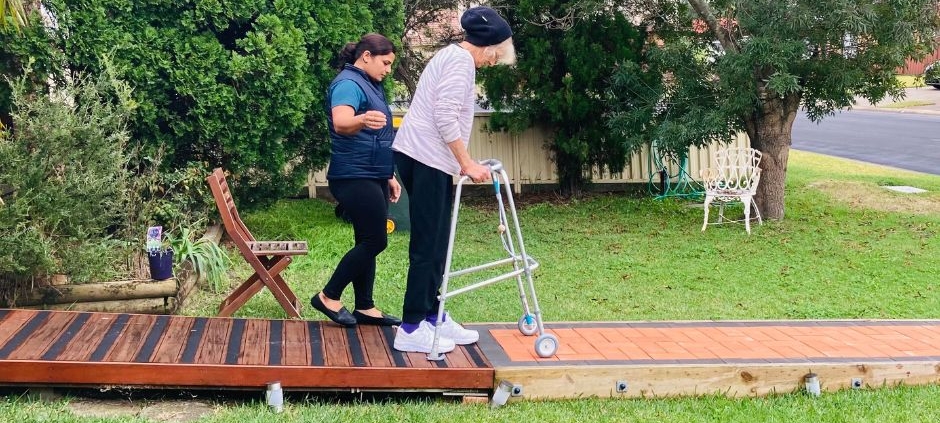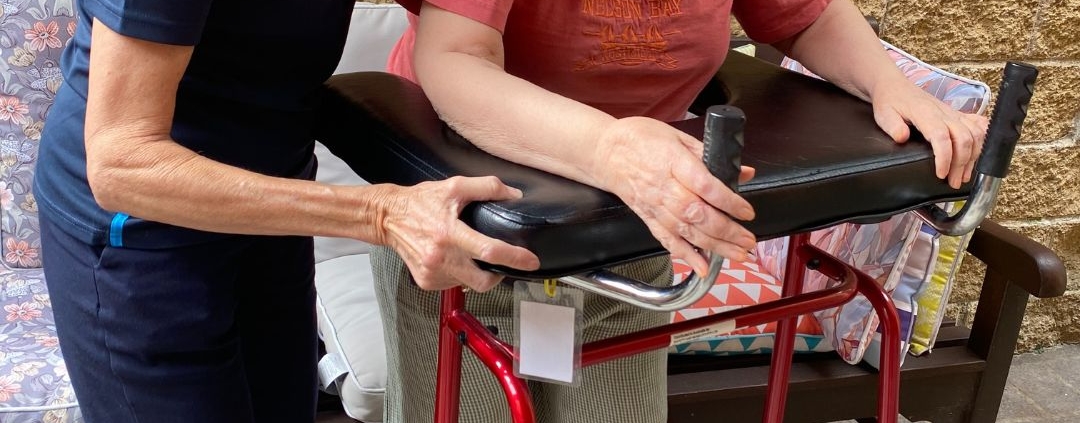In December 2022, Kitty commenced her rehabilitation journey with Move Healthcare. This journey began after a significant spine surgery in August 2022, where she had tumours removed, resulting in severe leg weakness. Our goal at Move Healthcare was to support Kitty in regaining her mobility and independence.
Initial Condition and Goals
Upon joining us, Kitty was transitioning from hospital care, where she had spent several months in rehabilitation. Initially, she could transfer from her bed to a wheelchair but walking was a significant challenge. Her primary objective was to improve her mobility and to walk again.
Personalised Rehabilitation Plan in consultation with her Multi-Disciplinary team
Understanding Kitty’s unique needs was crucial. Our team at Move Healthcare developed a home-based exercise program tailored to her condition. This program focused on balance and gait re-education exercises, essential for regaining walking abilities. Additionally, we provided necessary equipment to aid her mobility, including various walking frames and custom-made Ankle Foot Orthoses (AFOs) developed in collaboration with an orthotist. We also liaised with Kitty’s NDIS Support Coordinator and Occupational Therpist to best facilitate her rehabilitation needs.
Progress in Home Environment
Kitty’s rehabilitation took place in her home, allowing for a comfortable and familiar environment for her exercises. Our physiotherapists made regular visits to assess her progress and adapt her program as needed. The home setting facilitated a consistent routine, contributing significantly to her rehabilitation. Various equipment was loaned and trialled with Kitty at various stages of her rehab journey.



Achievements and Ongoing Goals
After six months of dedication to her exercise program, Kitty can now move around her home using a walking frame. She is currently focusing on new challenges, such as navigating steps and walking outside. These activities are vital for her next goal – walking outdoors in her neighbourhood and local parks. Kitty is now confident enough to drive her electric scooter to her local shops and is keen to progress her independence.
Continued Support and Care
Kitty continues to receive weekly visits from a Move Healthcare physiotherapist. She dedicates time each day to her exercise program, continually working towards further improvement in her mobility.

Kitty’s journey with Move Healthcare exemplifies our commitment to providing personalised care, working with other stakeholders and support to our clients. Her progress demonstrates the effectiveness of tailored rehabilitation programs and the importance of setting and achieving incremental goals. At Move Healthcare, we are dedicated to assisting our clients in regaining independence and improving their quality of life.















